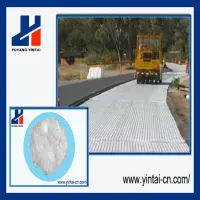-
Categories
-
Pharmaceutical Intermediates
-
Active Pharmaceutical Ingredients
-
Food Additives
- Industrial Coatings
- Agrochemicals
- Dyes and Pigments
- Surfactant
- Flavors and Fragrances
- Chemical Reagents
- Catalyst and Auxiliary
- Natural Products
- Inorganic Chemistry
-
Organic Chemistry
-
Biochemical Engineering
- Analytical Chemistry
- Cosmetic Ingredient
-
Pharmaceutical Intermediates
Promotion
ECHEMI Mall
Wholesale
Weekly Price
Exhibition
News
-
Trade Service
(2) Determination of the number of copies
1.
(1) Samples of solid waste that caused the environmental pollution case should be collected
(2) Solid waste with a clear source and process.
(3) For solid waste with unclear sources and processes, collect samples that can represent the characteristics of solid waste pollution at the scene of environmental pollution incidents
2.
(1) The identification should be based on the "National Hazardous Waste List" first
(2) The contaminated soil and water sediments generated by the pollution incident should be determined as solid waste according to GB34330.
(3) Solid wastes left over from history shall be sampled according to the judicial appraisal of environmental pollution cases involving illegal discharge, dumping, and disposal of solid wastes
3.
(1) The identification of hazardous wastes should be based on the generation of solid wastes to be identified.
Table 2-2 Minimum number of samples for solid waste collection
(2) When the solid waste is solid waste left over from history, if the solid waste generated by the comparable process is collected, the minimum number of samples to be collected shall be determined according to Table 2-2 according to the solid waste generated by the comparable process; if the collection is left over from history The solid waste shall be based on the total amount of solid waste left over, and the minimum number of samples to be collected shall be determined according to Table 2-2
(3) For the solid waste generated during the production process, the actual amount of mustache generated during the stable operation of the production facility is the amount of solid waste generated, and the minimum number of samples to be collected is determined according to Table 2-2
① When solid waste is continuously generated, the amount of solid waste generated within one month of the determined process shall be used as the basis, and the minimum number of samples to be collected shall be determined according to Table 2-2
②When solid waste is generated intermittently, if the time interval between solid waste generation is less than two months, the maximum amount of solid waste generated within one month of the process should be determined as the basis, and the minimum number of samples to be collected should be determined according to Table 2-2
③If there are parallel production lines, and the production of raw and auxiliary materials and production capacity do not affect the hazardous characteristics of solid waste, the solid waste generation volume of a single production line can be used as the basis, and the minimum number of samples to be collected can be determined according to Table 2-2
(4) The identification of hazardous characteristics of solid waste in the following situations may not determine the number of sampling points based on the amount of solid waste generated:
①Solid waste is a substance that loses its original use value in the process of industrial production and life.
The impact of the use process on the hazardous characteristics of the solid waste is judged based on the reasons for the loss of its original use value.
If there is no impact, the number of sampling samples can be appropriately reduced, but Not less than 5 copies
.
②The solid waste is wastewater treatment sludge.
If there is evidence that the source, type, discharge volume, and pollutant content of the wastewater are stable, the number of sampling samples can be appropriately reduced, but not less than 5
.
If the sludge is produced intermittently, the number of samples can be determined according to the sludge dehydration frequency of the thickening tank, and 2 samples are collected for each dehydration
.
③The solid waste comes from a continuous production process, and the facility is stable for a long time, and the raw and auxiliary materials are fixed.
The number of samples can be appropriately reduced, but not less than 5
.
④For liquid wastes stored in storage pools, non-movable large open containers, and tank trucks, the number of samples may be appropriately reduced, but not less than 5 samples
.
⑤ For solid waste stored in small removable containers, when the number of containers is less than the required number of increments, the number of sampling increments can be reduced
.
(3) Determination of the amount of incremental sample
(1) The amount of incremental samples collected for solid waste samples shall meet the following requirements at the same time:
①Meet the needs of analysis operation;
②Based on the original maximum particle size of solid waste, it should not be less than the mass specified in Table 2-3
.
Table 2-3 The minimum incremental sample required for an incremental sample of solid waste with different particle diameters
(2) The amount of incremental samples collected for semi-solid and liquid waste samples should meet the needs of analysis operations and sample retention
.
(4) Sampling time and frequency
(1) Continuous production
.
Sample collection should be completed in intervals of one month (or a production period); each sampling should be completed within 8 hours (or a production shift) of the stable operation of the equipment
.
Take each time as a copy
.
(2) Intermittent production
.
Sampling is performed according to the number of solid waste generations within one month of the determined process.
If the solid waste generation interval is greater than one month, only one sampling is required
.
(3) For the judicial identification of environmental pollution cases involving illegal discharge, dumping, and disposal of solid wastes or the identification and sampling of secondary solid wastes in environmental pollution incidents, only one collection is required
.







